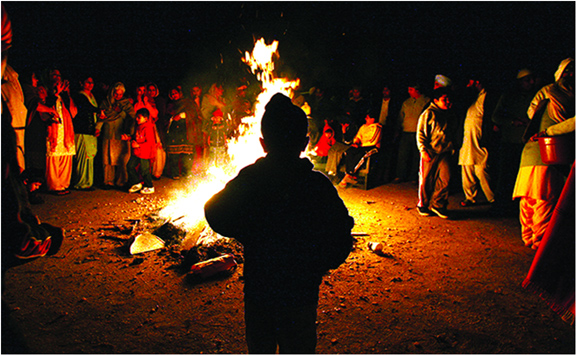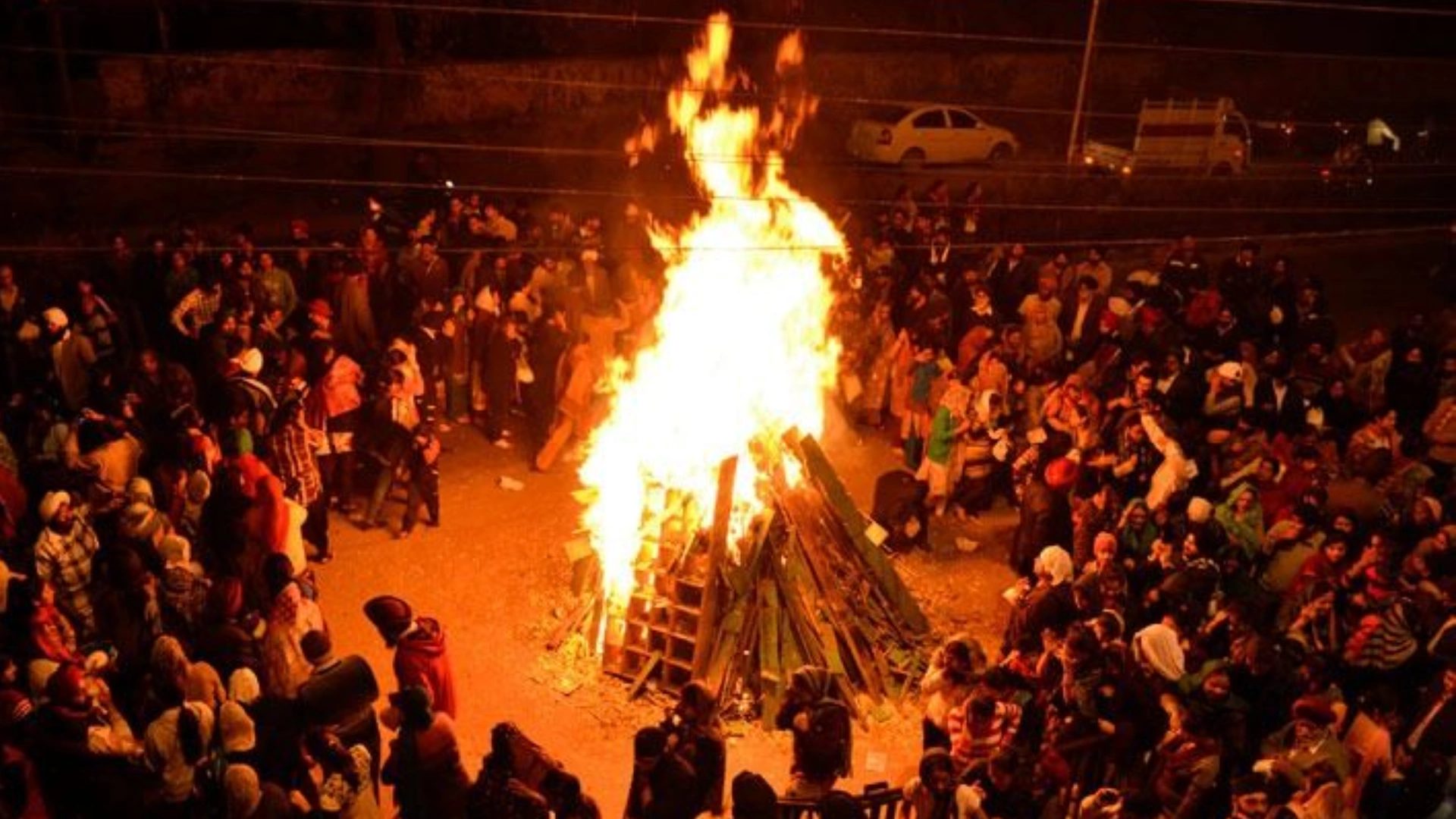Lohri is a vibrant festival primarily celebrated in northern India, especially in Punjab and Haryana, to mark the end of winter and the harvesting of the rabi crop.
It typically falls on January 13th and is closely associated with the winter solstice and the harvest season. Lohri is also linked to fertility, prosperity, and the worship of fire as a purifier and provider of energy.
What Is The Significance of Lohri?
Harvest Festival
Lohri celebrates the harvesting of crops, especially sugarcane and wheat, which are staples in Punjab. Farmers express gratitude to nature and pray for prosperity in the coming season.
Cultural Observances
The festival involves bonfires, dancing to the beats of the dhol, and singing traditional songs like “Sunder Mundriye.” These songs often narrate local folklore and express joy and gratitude.
Spiritual and Astronomical Importance
Lohri signifies the end of the longest nights of winter and the beginning of longer days, following the winter solstice. It is also considered an auspicious day to worship Agni (fire) and offer prayers for well-being and success.
Family and Community Bonding
Lohri is a time for families and communities to come together. It holds special importance for newlyweds and families with newborns, symbolizing new beginnings.

The Origin of Lohri
The origin of Lohri is deeply rooted in Punjabi culture, with several myths and historical narratives explaining its significance:
Connection with Dulla Bhatti
Lohri songs often mention Dulla Bhatti, a legendary figure in Punjabi folklore. Dulla Bhatti was a 16th-century local hero who is said to have helped rescue girls from being sold into slavery. He arranged their marriages and gave them dowries, earning immense respect among the people. Lohri songs honor his bravery and generosity.
Agricultural Traditions
Lohri has its roots in the agrarian society of Punjab, where it marked the end of the sowing season and the start of the harvest. Offerings like gajak, rewri, peanuts, and jaggery reflect the produce of the season.
Mythological Association
Some believe Lohri is linked to Goddess Sati and her sacrifice. The burning of the bonfire is seen as a representation of her intense devotion and a reminder of the cycle of life and death.
Seasonal Transition
Lohri celebrates the transition of the Sun into the Makar Rashi (Capricorn) in the Hindu calendar, which is also observed as Makar Sankranti in other parts of India. This signifies the Sun’s northward journey, or Uttarayan, a period considered auspicious in Hinduism.
Key Customs and Rituals
Bonfire Rituals
People gather around a bonfire in the evening, toss offerings like sesame seeds, jaggery, and peanuts into the fire, and pray for prosperity and health. The bonfire is lit on Lohri night to symbolize the end of the cold winter months and to welcome the warmth of the sun. Traditionally, people would gather around the fire to enjoy warmth as a community, while also praying for an abundant harvest
Traditional Songs and Dance
Groups sing traditional Lohri songs and perform energetic Bhangra and Gidda dances around the bonfire.
Feast and Celebration
Special foods like makki di roti and sarson da saag are prepared, along with sweets made from jaggery and sesame.
Lohri is not just a festival but a celebration of life, gratitude, and nature’s bounty. Its origins in folklore, agriculture, and spirituality make it a significant cultural event that continues to bring communities together in joyous celebration.



















